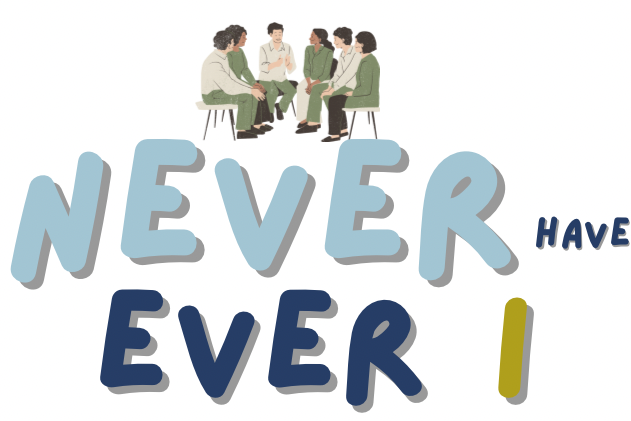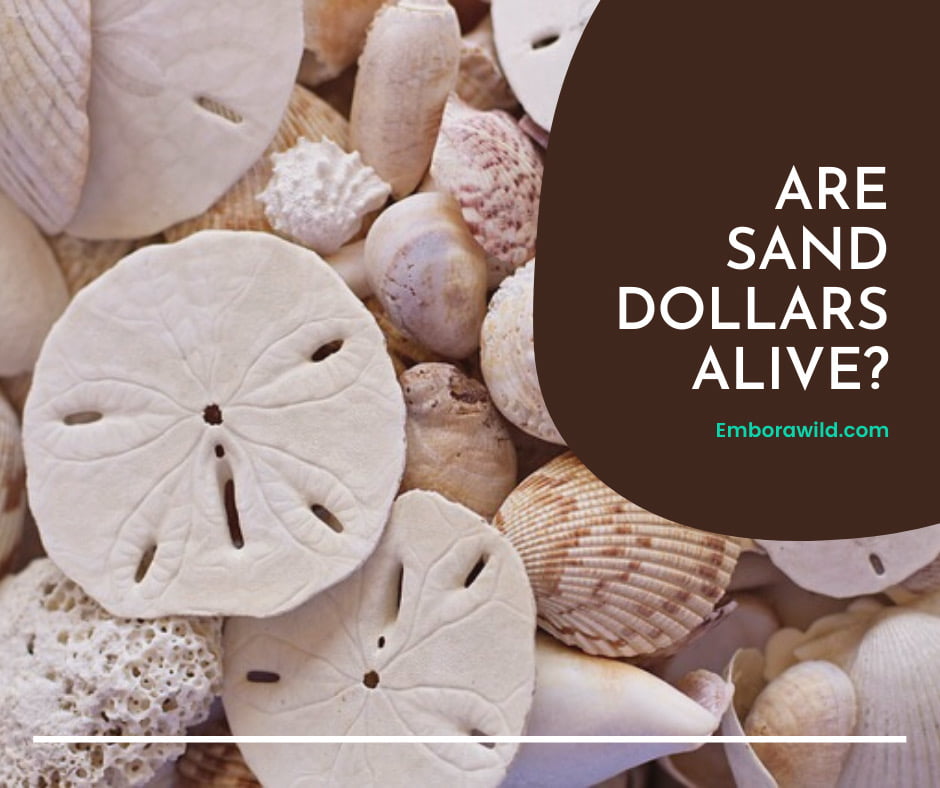So you’re a beachcomber? Of course we know sand dollars are one of the most valuable treasures you can ever scoop out from the ocean shores.
But these yummy looking entities could actually be more related to you than they are to rocks and stones you hurl directly into the ocean’s belly, and thus, would be more deserving to be left alone in the muddy comfort of the ocean floors than be stacked alongside lifeless valuables at the treasure trove.
Read on to discover whether or not sand dollars are actually alive and whether bringing them home for the treasure collection is appropriate.
Are sand dollars alive?
Yes, sand dollars are alive. They are living, breathing creatures that thrive in the bottom of the ocean just like fishes and other aquatic invertebrates do.
The white, naked flat-disks that you find around the ocean-shores aren’t living and breathing sand dollars though.
They are skeletal remains of dead individuals that have been bleached into a white coloration by overhead sunlight. The typical appearance of a living sand dollar varies from green, blue, violet to purple depending on species.
What are sand dollars?
Sand dollars are species of sea urchins. Sea urchins are basically invertebrates (animals without vertebral columns) belonging to the class of animals known to as ‘echinoids’ (translated as ‘spine’ in the Greek language).
These animals are nothing but marine creatures that have a fivefold symmetry (meaning that their bodies can be split into five equal parts; which is always the case for regular echinoids, for example the pencil urchin, but roughly the case for irregular echinoids, for example, the sand dollar), and also having a ridged skeleton (called test; you can test and see whether it breaks) bearing numerous movable spines.
Sea urchins typically range in size from 1 to 10 cm. Their tests are hard shells that can be globular in appearance or flattened into a disk as is the case with sand dollars.
Sea urchins have archaically been addressed as sea hedgehogs due to the striking resemblance they bear with the terrestrial animal. The term “urchin” actually means hedgehog in the Greek language in case you didn’t know.
Coming back to our little friends sand dollars, these creatures are widely recognised by different names in many regions around the world, for example in New Zealand, they are known as sea cookies or snapper biscuits while in South Africa the are referred to as pansy shells. Sand dollars are also called sand cakes or cake urchins.
The closest relatives to sand dollars are the heart urchins. Their cousins include sea lilies, sea cucumbers and sea stars also referred to as starfish.
Quick Fact
“ Sand dollars actually got their name from the “silver coin” impression the bodies of dead and bleached individuals gave to beachcombers when washed up ashore.
For beachcombers of the previous centuries, the white colored skeleton lying along the SHORELINES looked much like some treasured silver coins.
So they opted to call the treasures “Sand dollars” which is a name that still persists till date.”
How to tell apart a living sand dollar from a dead one
Telling apart a living sand dollar from a dead one is quite easy and also very much needed.
These creatures, just like many (if not all) species of the ocean, play an important role in the ecosystems where they thrive, even after they end up dead and their shells become buried a few feet into the seabed.
Living sand dollars actually help control the populations of small invertebrates which would otherwise explode and cause an imbalance in local niche when left undisturbed.
They additionally help to filter out debris that are buried underneath the sandy and muddy bottom of the oceans where they live; because they love to burrow inside these mediums in search for food items or to hide away from lurking predators, and they also by themselves, serve as a tasty snacks and source of nutrition for many marine predators such as the nine armed sea stars; (talk about betrayal), crabs, fishes and some species of octopuses.
Dead sand dollars on the other hand help to provide calcium carbonate for the oceans through their shells which are made up of series of plates composed of this substance.
Releasing calcium carbonate into the oceans helps reduce the acidification caused by carbon concentrations which if left untreated, has been proven detrimental to corals, shellfishes and other small marine organisms.
You can now see how crucial sand dollars are despite how small they are and regardless of whether or not they are actually alive.
So one of the most inhumane and environmentally destructive thing you can ever do is to take away a living and breathing sand dollar from its natural habitat because you value a treasured souvenir. It’s actually illegal to do so in many states around the world. Taking a dead one may or may not be. And it wouldn’t really matter alot if you did so.
That’s why it‘s crucial that you learn how to differentiate a living sand dollar from a dead one, if at all, bringing one of those beautiful shells from the beach shore becomes a necessity.
Here are the ways to do so.
- Living sand dollars are spiky and colorful: What most people find at the beach shores are the bleached tests or skeletons of dead sand dollars. If you ever find any of these lurking somewhere around the beach, feel free to take it home and add it to your treasure collection; provided your state laws allows you to do so. Living or recently dead sand dollars have tests with a skin made up of velvet-textured spines covered by very small hairs. The velvety spines can be green, blue, violet, purple or grey depending on the sand dollar species in question. If the sand dollars you’re planning to take home fits similar to the description above, you may or may not have a living individual. The way you can further tell if its alive is by noticing whether the tiny spines on its underside are in motion and its mouth (which is a tiny hollow at the middle of its underside) isn’t readily visible. If yes, then you’ve got a treasure, but one that the oceans would readily trade their waves for, and if no, then congratulations because you’ve got yourself a beautiful addition for the treasure shelf. Another way you can differentiate living sand dollar from a recently dead one is by observing whether there are any seaweed covering them at the top or bottom. Live sand dollars don’t have any sea weed covering them!
- Living sand dollars are magical; they turn surfaces yellow when they touch them: Take up the sand dollar in question and let sit in your palms for a minute. If it leaves a yellow spot or stain behind, it’s alive. That’s because living sand dollars secrete echinochrome which a harmless substance that stains the fingers pale yellow.
Got a living sand dollar from the tests above? Take it quickly into the intertidal zone of the ocean. Don’t be afraid if it gets buried into the mud or sand at the sea bed when you throw it. They love exploring these mediums! These critters hardly ever survive minutes on land when they become washed on shores by the ocean currents. So the moment you’re done investigating, quickly take the individual to the oceans so it can continue playing its role of balancing the ecosystem.
Quick facts about sand dollars
1) Sand dollars feed using their hairs: At the bottom of every sand dollar are fine tiny hair-like structures called cilia, and at the center of the star shaped grooves on the underside is its mouth. Sand dollars employ pincers and spines on their body surface to catch their prey organism of algae and planktons and to feed, they employ the cilia alongside a mucus coating to ferry the food particles into the mouth. Transported preys on a sand dollar are often located at the spot where spines bunch up into tiny triangular shaped cones. Poor algae!
2) Sand dollars have teeth and they chew: Within their mouths are five teeth-like sections which serves to grind up food particles. They can chew or grind for up to 15 minutes before they swallow. Food takes around 48 hours to completely digest.
3) Forget their hard shells, sand dollars have natural predators too: While sand dollars love to enjoy the tiny and soft bodies of planktons and algae within their diets, they too form a crucial part of the diets of other living organism. These animals include their cousins the nine armed sea stars, pink sea stars, ocean pot, California sheepheads and starry flounders.
4) Sand dollars are short lived: They only live for an average of 10 years. The ages of wild sand dollars can actually be determined from the growth rings located on their tests.
5) Sand dollars live in large clusters: During their reproductive season, this is especially useful since it fosters reproduction. Males and females reproduce by spawning which means that they release sperms and eggs into the waters respectively. The free swimming sperms meet with the eggs and fertilize them, then microscopic babies or larvae are born which contrast greatly in resemblance with their parents.
Cite this Article ” (APA Format)
Bunu. M. (2020, October 3). Are sand dollars alive?. Retrieved from http://emborawild.com/are-sand-dollars-alive/

